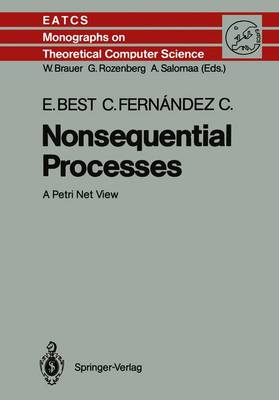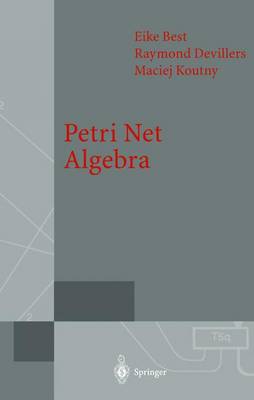Monographs in Theoretical Computer Science : An Eatcs
1 primary work • 2 total works
Book 13
The theory of Petri nets is a part of computer science whose importance is increasingly acknowledged. Many papers and anthologies, whose subject matter is net theory and its applications, have appeared to date. There exist at least seven introductory textbooks on the theory. The present monograph augments this literature by offering a mathematical treatment of one of the central aspects of net theory: the modelling of concur- rency by partially ordered sets. Occurrence nets - which are special nets as well as special partial orders - are proposed by net theory for this purpose. We study both the general properties of occurrence nets and their use in describing the concurrent behaviour of systems. Occurrence nets may be contrasted with a more language-oriented approach to the modelling of concurrency known as arbitrary interleaving. We will dis- cuss some connections between these' two approaches. Other approaches based on partially ordered sets - such as the theory of traces, the theory of event structures and the theory of semi words - are not considered in this book, in spite of the strong links between them and net theory.
In modern society services and support provided by computer-based systems have become ubiquitous and indeed have started to fund amentally alter the way people conduct their business. Moreover, it has become apparent that among the great variety of computer technologies available to potential users a crucial role will be played by concurrent systems. The reason is that many commonly occurring phenomena and computer applications are highly con current : typical examples include control systems, computer networks, digital hardware, business computing, and multimedia systems. Such systems are characterised by ever increasing complexity, which results when large num bers of concurrently active components interact. This has been recognised and addressed within the computing science community. In particular, sev eral form al models of concurrent systems have been proposed, studied, and applied in practice. This book brings together two of the most widely used formalisms for de scribing and analysing concurrent systems: Petri nets and process algebras. On the one hand , process algebras allow one to specify and reason about the design of complex concurrent computing systems by means of algebraic operators corresponding to common programming constructs. Petri nets, on the other hand, provide a graphical representation of such systems and an additional means of verifying their correctness efficiently, as well as a way of expressing properties related to causality and concurrency in system be haviour.

